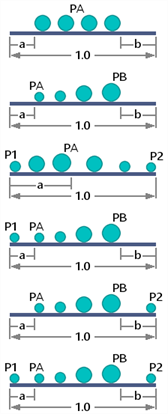Special Topics: Non-structural Mass
Description
Mass can be categorised as either Structural or Non-structural in Strand7.
-
Structural Mass
Structural mass can come from the product of the element's volume and its mass density defined in the element's Common Properties: Linear. Structural mass can also come from Node Attributes: Translational Mass and Node Attributes: Rotational Mass.
-
Non-structural Mass
Non-structural mass can only be applied as attributes.
Non-structural mass attributes are mainly used for modelling live and non-structural dead loads which may vary across a range of operation conditions. For example, furniture not fixed to a building will generate gravity load on the building slab and therefore can be modelled with non-structural mass attributes. The non-structural mass attribute is load case dependent, and each attribute may be active only for the load case it has been assigned to.
From the solver's perspective, the difference between a structural mass and a non-structural mass is that non-structural masses are element attributes that are load case specific whereas a structural mass is active across all load cases.
Non-structural mass allows a load to be applied via a mass attribute rather than via a pressure attribute. In static analysis, this makes little difference; but for dynamic analysis, the two are completely different.
The forces generated by the action of gravity or other accelerations acting on structural and non-structural mass can be included or excluded based on the options in CASES: Load Cases. Using these options, the structural mass can be included in its own self weight load case, separately from the non-structural mass load cases, so that when results for multiple load cases are combined, the self weight effect is considered correctly (i.e., only once).
A non-structural mass attribute is also associated with a dynamic factor with a default value of 1.0. This factor can be used to change the contribution of the prescribed mass in equivalent static and in dynamic analyses. A dynamic factor will be used for linear seismic load cases, natural frequency, spectral response, harmonic response, linear and nonlinear transient dynamic analyses; the effective mass in these analyses is the product of the mass value and the dynamic factor. This applies to mass that produces force when acted upon by gravity as well as mass added to the global mass matrix (this affects natural frequency and transient dynamic analysis).
Non-structural mass may also be offset from the node or element to which it is applied, by defining the offset position on the attribute. If an offset is applied, the mass is transformed to the offset location, which generally means that the resulting mass matrix will have off-diagonal, or rotational mass terms.
Non-structural mass attributes are available for the following entities:
-
Node
A single value with units of mass, acting in the three translational directions.
-
Beam
Beam non-structural mass density with units of mass per length, which may be constant over the beam or variable along the beam axis according to a distribution type shown below. The non-constant and partial distributions are particularly useful when using patch plates that convert plate non-structural mass to beam non-structural mass (see Plate Attributes: Load Patch Type and Convert Tools: Patch Loads to Beam Loads).

-
Plate
A constant mass density with units of mass per area applied to the plate surface.
-
Brick face
A constant mass density with units of mass per area applied to brick element faces.
Static Analysis
For static analysis, non-structural mass may generate inertia forces based on the global load case settings.
Non-structural mass attributes generate load when non-zero accelerations (or gravity) are applied. When no global accelerations are applied, non-structural mass attributes will have no effect on static analysis results.
The CASES: Load Cases setting contains acceleration definition parameters and structural and non-structural mass options.

When global acceleration is defined, the user may choose to include or exclude the inertia forces due to the structural masses and/or non-structural mass, independently.
Dynamic Analysis
For dynamic analysis, non-structural mass in one or more load cases may be included in addition to the structural mass. These are added to the mass matrix as per the case selection on SOLVERS Home: Non-structural Mass Added to Mass Matrix. For solvers based on mode superposition (i.e., harmonic response, spectral response and linear transient dynamic with mode superposition), the non-structural mass that is included is that used by the natural frequency analysis.
See Also